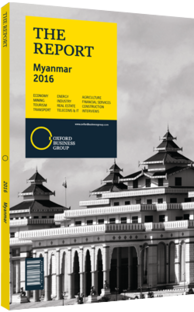Linking Myanmar's port and road infrastructure
The development of Dawei is an ambitious project that, if successful, will enable goods to be shipped to Bangkok without travelling around the Malaysian peninsular through the ports of Singapore and Malaysia. They will instead be shipped directly to or from Dawei and then transported by road to Bangkok.
Public Project
The development of Dawei is overseen by a joint company owned by the governments of Myanmar and Thailand: the Dawei Special Economic Zone (SEZ) Development Company. In 2015 Japan, Myanmar and Thailand signed a memorandum of understanding that recognised, according to the statement, “the importance of the three countries in the comprehensive development of the Dawei SEZ project to promote integrated economic development and enhance connectivity in and around Mekong sub-region,” giving momentum to the effort.
The following month, Thailand signed a $1.7bn agreement for the first phase of the initiative. That work, to be carried out by an Italian-Thai consortium, will include a 27-square-km industrial estate and will begin with the construction of a 138-km road from Dawei to Kanchanaburi province at the Myanmar-Thailand border. JICA said it has been asked to undertake a feasibility study for the highway.
Power & Water
The first phase of the project will include a basic port, a small power plant and the provision of water supplies and fixed and mobile telecommunications. Work on the latter was expected to start at the end of the 2015 rainy season. The Myanma Port Authority said the development of a deep sea port will come later, possibly not until 2019, and will take into consideration the structure of maritime trade and the availability of other infrastructure, including roads. “You may think it is far from Yangon and that there is not enough road infrastructure, but, at the same time, Dawei and the SEZ will be very important,” U Kyaw Than Maung of the Myanma Port Authority, told OBG. “Myanmar is part of the Greater Mekong sub-region and Dawei will be its western corridor. If we finish, it will change maritime freight routes and cut out the need for ships to go from Thailand around Malaysia and up the Strait of Malacca.”
Dawei will become Myanmar’s third SEZ after Thilawa, which is 23 km south-east of Yangon, and Kyaukphyu, on the Indian Ocean coast. Work on the 2400-ha Thilawa SEZ, a joint venture between Japan and Myanmar and driven by Japan’s Mitsubishi, Marubeni and Sumitomo, started in November 2013. The zone became operational in 2015. Investors include clothing companies and manufacturers of electronics components. Kyaukphyu is a joint venture between China and Myanmar. With its $2.5bn oil and gas pipeline to China, Myanmar hopes the port can rival Singapore as a petrochemicals hub.
Understanding Issues
With Dawei, there is both greater awareness of the challenges and greater determination to see the development succeed. U Minn Thu Aung, managing director of Helio International, told OBG, “The establishment of the Kyauphyu and Dawei SEZs will increase the potential of Myanmar becoming a trans-shipment hub, but before that happens rules and regulations need to be in line with international standards. Some regulations are outdated and have been used since independence.”
Japan, Myanmar’s leading foreign investor, has identified the country as one of the “missing links” in the logistics network across South-east Asia, particularly in the Greater Mekong sub-region. With the greater appreciation of Dawei’s place in the region, it remains an immense project and funding continues to be an issue. ”It is essential to boost infrastructural developments locally to support trade and economic growth,” Dawid Sold, the country manager for Maersk in Myanmar, told OBG, “The project sounds interesting but also challenging. It may be a game changer for the country if it works out and leads to much-improved and well-connected roads and railways.”
You have reached the limit of premium articles you can view for free.
Choose from the options below to purchase print or digital editions of our Reports. You can also purchase a website subscription giving you unlimited access to all of our Reports online for 12 months.
If you have already purchased this Report or have a website subscription, please login to continue.

